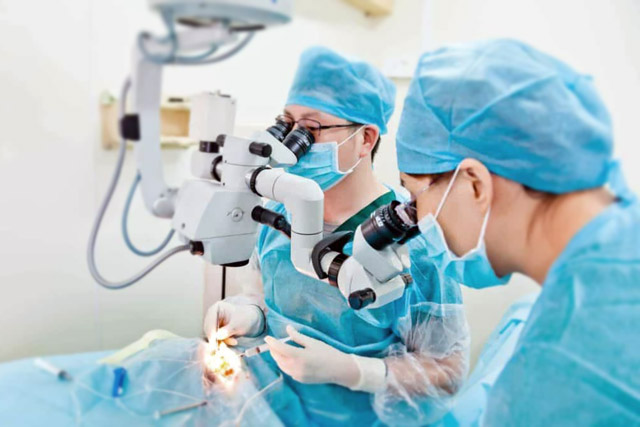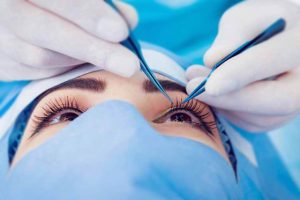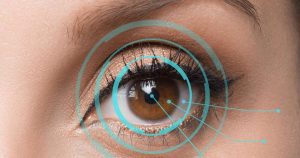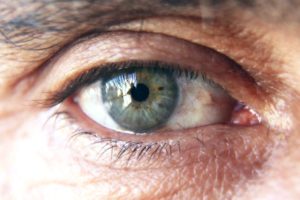What is a cataract and what is cataract surgery?
Cataracts are a natural, gradual condition that can happen to all of us eventually. A cataract is when the eye’s natural lens becomes cloudy due to chemical changes, advancing age, hereditary reasons, injury, disease, or other various other reasons. Your vision may look fuzzy and colors can look muted. You may also notice glare and halos while driving. Often, surgery isn’t necessary until your cataracts are affecting your daily life.
In cataract surgery, your natural lens is replaced with an intraocular lens implant. Cataract surgery is very common and is considered a very safe procedure.
Can cataracts be prevented?
There is no sure-fire way to prevent cataracts, unfortunately. However, there are actions you can take to lower your odds of getting them.
- Eat right
- Quit smoking
- Wear sunglasses
- Limit alcohol consumption
- Watch your blood sugar
- Get regular eye exams
According to WebMD, eating foods high in antioxidants like Vitamin C and E may help prevent cataracts. Some of these foods include tomatoes, red and green peppers, broccoli, strawberries, almonds, and spinach.
How is a cataract removed?
A small incision is made in the top surface of the eye with a scalpel or laser. Then, a circular hole is cut in the front of the thin membrane that encloses the eye’s natural lens. More often than not the lens is then broken down into small pieces with a laser or ultrasonic device in order to be more easily removed.
Once the entire lens is removed, it’s replaced with an implant called an intraocular lens (IOL) to restore vision. Traditionally this is a singular-focused that allows you to see clearly at one distance, however, modern multifocal lenses allow patients to see clearly at all distances, reducing or even eliminating their use of corrective eyewear.
It’s a very common procedure and has a high success rate. Recent advancements in technology now allow the use of a computer-guided laser to perform various steps of the procedure in a significantly more precise manner. In short, we can restore vision after cataracts with techniques that are accurate, bladeless, and customized.
How is laser cataract surgery different from traditional cataract surgery?
Laser cataract surgery does not require the use of a blade. Because of this, it increases accuracy and precision. This results in the reduction of surgical time and strain in the eye.
In traditional cataract surgery, the required incisions to the cornea are made using a handheld, single-use blade. Your surgeon then uses a surgical instrument that opens the lens capsule of the eye that holds the cataract, and to remove the cataract, a small probe is inserted into the eye to emit ultrasound waves and break up the cataract into pieces to be easily removed.
With laser cataract surgery, the incisions are made with the laser and to create a more precise opening into the lens capsule. Additionally, a laser is used to soften the cataract before removing it from the eye. The next steps, removing the fragments of the cataract and inserting an intraocular lens, is done by using the same probe done by the surgeon.
Am I a candidate for cataract surgery?
Most people are candidates for cataract surgery. However, you will need to speak with a board-certified eye surgeon to confirm if you are, in fact, a candidate for the surgery. Dr. Walman and his team at Walman Eye Center have over 30 years of experience with this type of surgery, and we welcome you to a free consultation.
Will I need to wear my glasses after surgery?
In cataract surgery, you can choose from multiple different types of lenses. As mentioned earlier, the artificial intraocular lenses traditionally have a single-focus that allows you to clearly see at one distance. Now, there are multifocal lenses that allow patients to see clearly at all distances, and potentially eliminating the need for corrective eyewear altogether.
Additionally, we serve the option of Toric lenses which can eliminate astigmatism and strengthen your vision for distance, and eliminate the need to depend on glasses for the correction of astigmatism.
What is the purpose of 3D imaging?
Every person is unique just as every eye has a unique shape and size. Before your treatment, our laser system scans your eye, creating a comprehensive 3D map of the structure of your eye. This provides your surgeon with extensive detail about your eye and allows the laser to be precise in the way to make incisions exactly where intended and in a matter of seconds.
How long does the procedure take?
Surgery without complications should only take about 10 minutes. Waiting for your sedation anesthesia, however, requires 30 minutes to an hour to wake up and feel closely back to normal.
What should I expect for recovery?
You might be surprised by how good you feel and how fast you’re able to resume normal activities. It does take some time for your visual system to adapt to the new intraocular lens, therefore, you may see blurry or distorted visuals when you first remove the eye shield. Any redness or bruising in and around the eye should dissipate in just a few days.
Typically you’ll have a follow-up appointment the day after your surgery to ensure the procedure has gone well.
How can I get cataract surgery?
The first step is to schedule a free consultation. There, you and your surgeon can discuss if you’re a good candidate, as well as answer any remaining questions you may have about the procedure.




